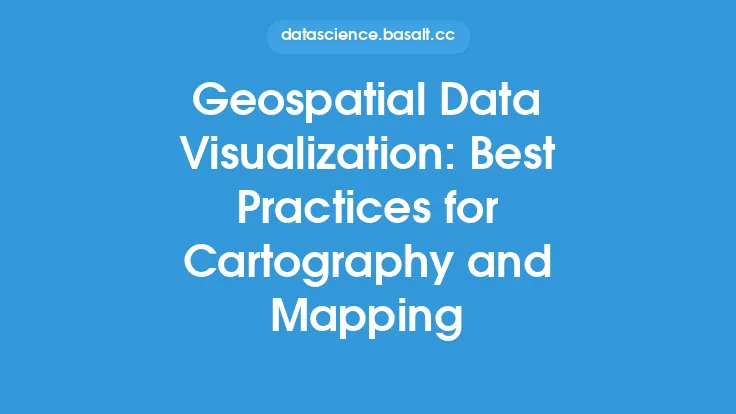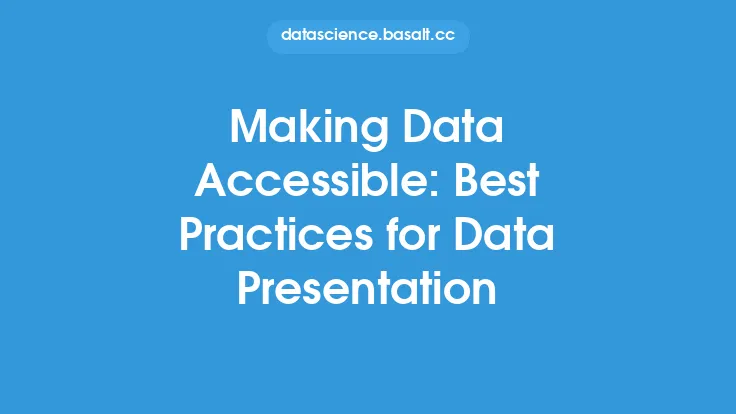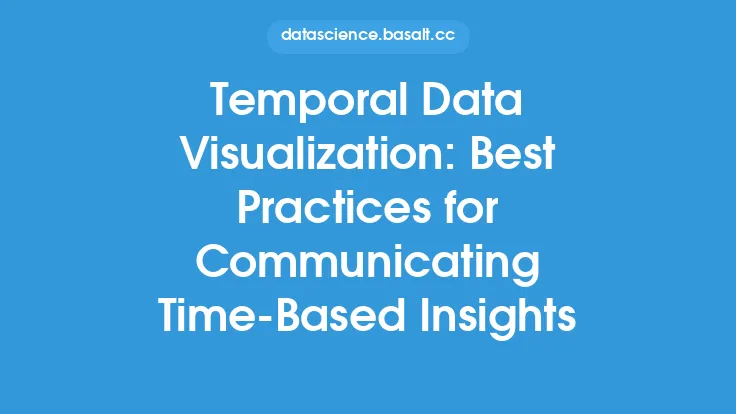Data preparation is a crucial step in the data analysis process, as it directly affects the accuracy and reliability of the insights generated. The goal of data preparation is to transform raw data into a clean, consistent, and structured format that can be easily analyzed and interpreted. In this article, we will discuss the best practices for data preparation, highlighting the key steps and techniques involved in preparing data for analysis.
Introduction to Data Preparation
Data preparation involves a series of steps that help to ensure the quality and integrity of the data. This includes data cleaning, data transformation, data reduction, and data formatting. The process of data preparation requires a thorough understanding of the data, as well as the ability to identify and address any issues or inconsistencies that may be present. By following best practices for data preparation, organizations can ensure that their data is accurate, complete, and consistent, which is essential for generating reliable insights and making informed decisions.
Data Quality and Integrity
Data quality and integrity are critical components of the data preparation process. Data quality refers to the accuracy, completeness, and consistency of the data, while data integrity refers to the ability of the data to be trusted and relied upon. To ensure data quality and integrity, it is essential to implement data validation and data verification processes. Data validation involves checking the data for errors and inconsistencies, while data verification involves confirming the accuracy of the data against external sources. By ensuring data quality and integrity, organizations can trust their data and generate reliable insights.
Data Cleaning and Preprocessing
Data cleaning and preprocessing are essential steps in the data preparation process. Data cleaning involves identifying and correcting errors, inconsistencies, and inaccuracies in the data, while data preprocessing involves transforming the data into a format that is suitable for analysis. This may include handling missing values, removing duplicates, and performing data normalization. Data cleaning and preprocessing require a thorough understanding of the data, as well as the ability to identify and address any issues or inconsistencies that may be present.
Data Transformation and Feature Engineering
Data transformation and feature engineering are critical components of the data preparation process. Data transformation involves converting the data into a format that is suitable for analysis, while feature engineering involves creating new features or variables from existing ones. This may include aggregating data, creating new variables, and performing data normalization. Data transformation and feature engineering require a thorough understanding of the data, as well as the ability to identify and create new features that are relevant to the analysis.
Data Storage and Management
Data storage and management are essential components of the data preparation process. Data storage involves storing the data in a secure and accessible location, while data management involves ensuring that the data is properly organized and maintained. This may include implementing data governance policies, creating data catalogs, and performing data backups. By ensuring proper data storage and management, organizations can ensure that their data is secure, accessible, and reliable.
Best Practices for Data Preparation
To ensure accurate insights, it is essential to follow best practices for data preparation. This includes:
- Developing a data preparation strategy that aligns with the organization's goals and objectives
- Implementing data validation and data verification processes to ensure data quality and integrity
- Performing data cleaning and preprocessing to identify and correct errors and inconsistencies
- Transforming and feature engineering the data to create new features and variables
- Storing and managing the data in a secure and accessible location
- Continuously monitoring and evaluating the data preparation process to ensure that it is effective and efficient.
Tools and Technologies for Data Preparation
There are a variety of tools and technologies available for data preparation, including:
- Data management platforms, such as data warehouses and data lakes
- Data preparation software, such as data cleaning and data transformation tools
- Data governance platforms, such as data catalogs and data governance tools
- Cloud-based data preparation platforms, such as Amazon Web Services and Microsoft Azure
- Open-source data preparation tools, such as Apache Spark and Apache Hadoop.
Conclusion
Data preparation is a critical step in the data analysis process, as it directly affects the accuracy and reliability of the insights generated. By following best practices for data preparation, organizations can ensure that their data is accurate, complete, and consistent, which is essential for generating reliable insights and making informed decisions. By implementing data validation and data verification processes, performing data cleaning and preprocessing, transforming and feature engineering the data, storing and managing the data, and continuously monitoring and evaluating the data preparation process, organizations can ensure that their data is of high quality and integrity. Additionally, by leveraging tools and technologies for data preparation, organizations can streamline and automate the data preparation process, making it more efficient and effective.





